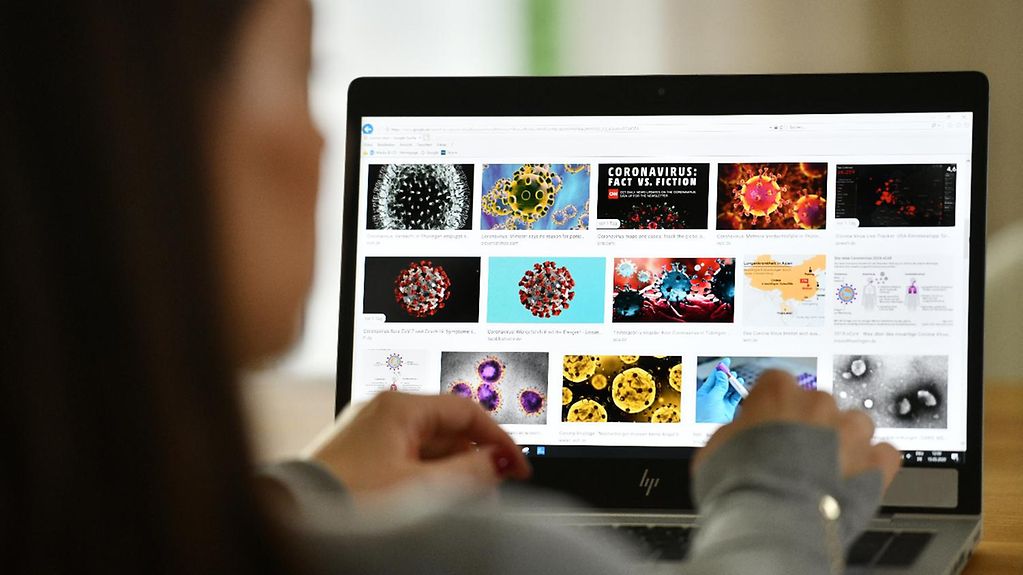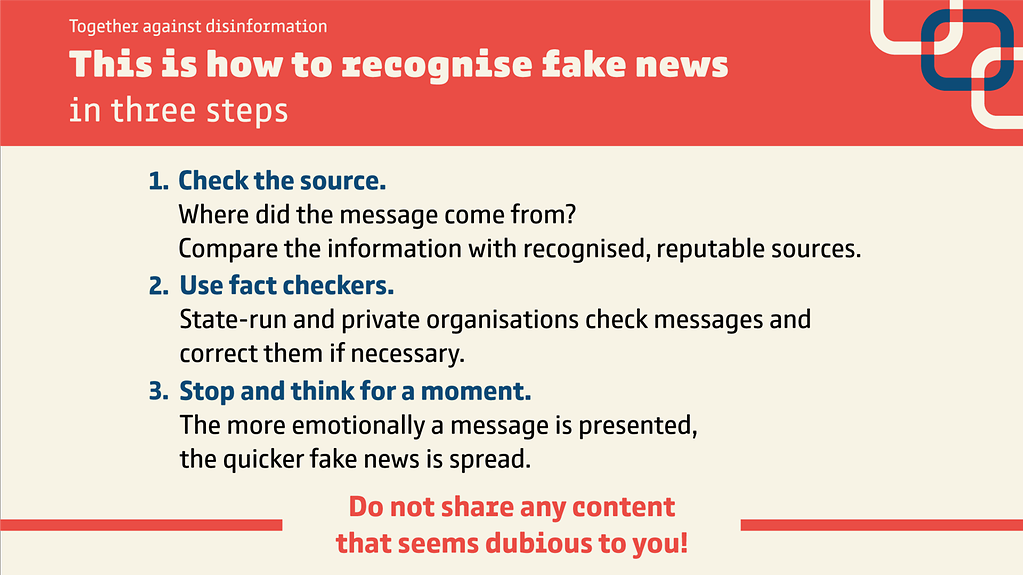Social media
Fake news and conspiracy theories spread rapidly across social media. This is dangerous because they can reinforce existing uncertainties and fears.
3 Min. Lesedauer

Fake news are dangerous: there are numerous rumours about the coronavirus circulating primarily on social platforms and messenger services.
Foto: picture alliance / Frank May
More and more people using social media and messenger services like Whatsapp come across fake news. The coronavirus pandemic was and is a breeding ground for disinformation with forwarded voice messages, links to dubious cures and hoax health tips and videos of conspiracy theories about the origin of the virus or the Covid vaccination all being circulated. The problem is that messages that are distributed privately are considered particularly trustworthy. It is all the more important not to forward untrustworthy messages on the spur of the moment.
Scrutinise rather than forward
Fake news are often spread by private individuals without malicious intent, but because people worry. In cases of doubt, fake news stir up uncertainty or spread panic. The more emotional the message, the more often it is spread. This makes it all the more important not to take part in its spread and to keep calm. Do not forward dubious content without checking!
Check sources
It always helps to compare dubious messages against two other sources. For example, you can find information on the official portals of the Federal Government and the Länder as well as through the media services of public-sector news channels and reputable daily and weekly newspapers.
Verified sources have a blue tick
Stick to the verified accounts of official agencies and institutions on social networks (identified by a blue tick) and check the legal notice on websites. This should include a contact responsible for website content and a full address, not just an anonymous e-mail address or the like. An overview of reliable information sources can be found here.
The origin of an image can be checked
Manipulated images can be checked by using image reverse search: the image or URL are uploaded into a search engine and this displays its origin.
Studies are not always representative
If the message refers to a study, it quickly gives the impression of having scientific proof. However, you should scrutinise the following aspects:
- Who produced the study?
Check whether the study originates from a reputable institute. Is it, for example, a renowned institute that has already published a lot of studies? If yes, you can check how these results have been reported by reputable media. Look particularly for information about who commissioned the study, i.e. the client. What could the client's self-interest in certain results of the study be?
- Who financed the study?
Check who financed it. If studies were financed by companies, could there be an economic interest behind the result? Of course, there may also be political interests behind the publication of a study.
- How valid is the result?
Provisional studies are often cited. These are to be considered with care, however, as they involve results that are representative and have not yet been scientifically proven. Using small case groups, scientists first produce a hypothesis, i.e. an assertion, which they then check using empirical research methods.
Provisional studies are therefore usually just a claim and do not yet represent any scientific proof.
Use fact checkers
Public-sector media and other independent organisations check individual pieces of fake news and correct them. There are more and more cases of coronavirus-related hoaxes. Examples of fact checkers include the independent investigative research centre Correctiv, the Federal Agency for Civic Education podcast on conspiracy theories, the EU vs. Disinfo campaign of the European External Action Service and WHO Myth busters, a service provided by the World Health Organization.

How to recognise fake news
Foto: Bundesregierung